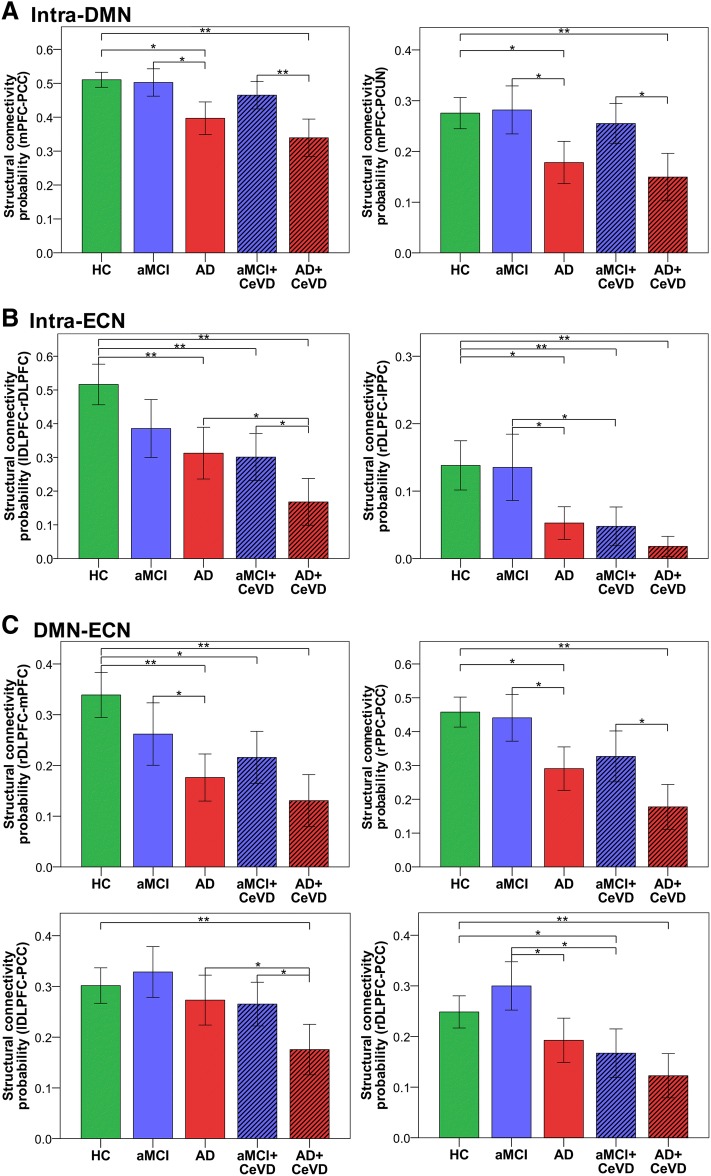Fig. 3.
Patients with cerebrovascular disease had more severe and early structural connectivity disruptions. Representative edges showing group differences in structural connectivity. a Both AD and AD+CeVD subjects had reduced intra-DMN SC compared with both controls and aMCI+CeVD but AD+CeVD subjects had more widespread damage (Table 2). b Intra-ECN SC was reduced in AD+CeVD compared with controls and aMCI+CeVD as well as AD participants (left). Additionally, subjects with aMCI+CeVD also had reduced intra-ECN SC compared with controls and aMCI only subjects (right). c Inter-network SC showed reduced connectivity in AD+CeVD compared with controls and aMCI+CeVD and in AD subjects compared with controls and aMCI. Additionally, the bottom two panels illustrate SC disruption between AD+CeVD and AD as well as aMCI+CeVD and aMCI participants. Pairwise comparisons were corrected for multiple comparisons. *p < 0.05, **p < 0.001. AD Alzheimer’s disease, aMCI amnestic mild cognitive impairment, CeVD cerebrovascular disease, DMN default mode network, ECN executive control network, HC healthy controls, lDLFPC left dorsolateral prefrontal cortex, lPPC left posterior parietal cortex, mPFC medial prefrontal cortex, PCC posterior cingulate cortex, PCUN precuneus, rDLFPC right dorsolateral prefrontal cortex, rPPC right posterior parietal cortex, SC structural connectivity

